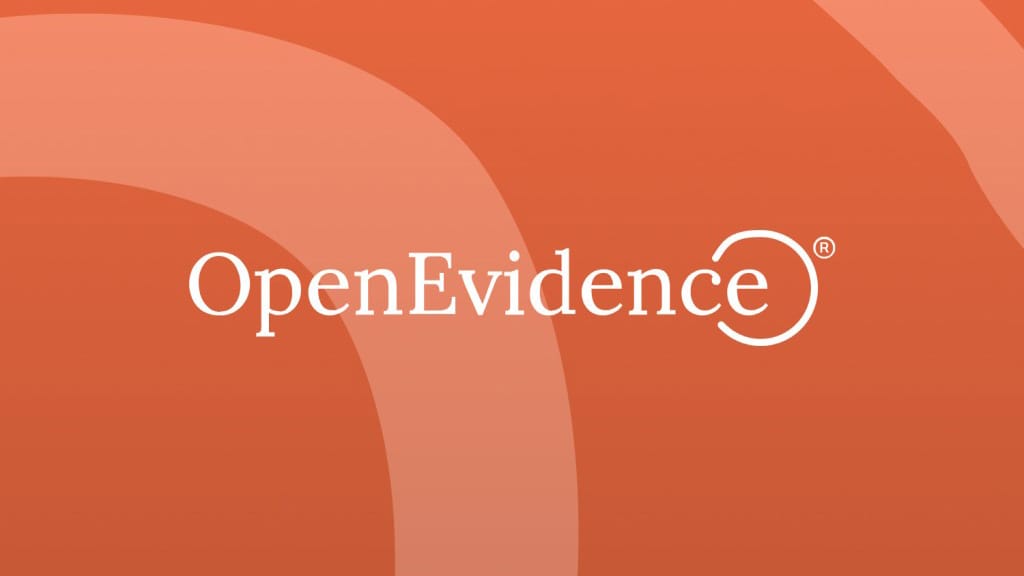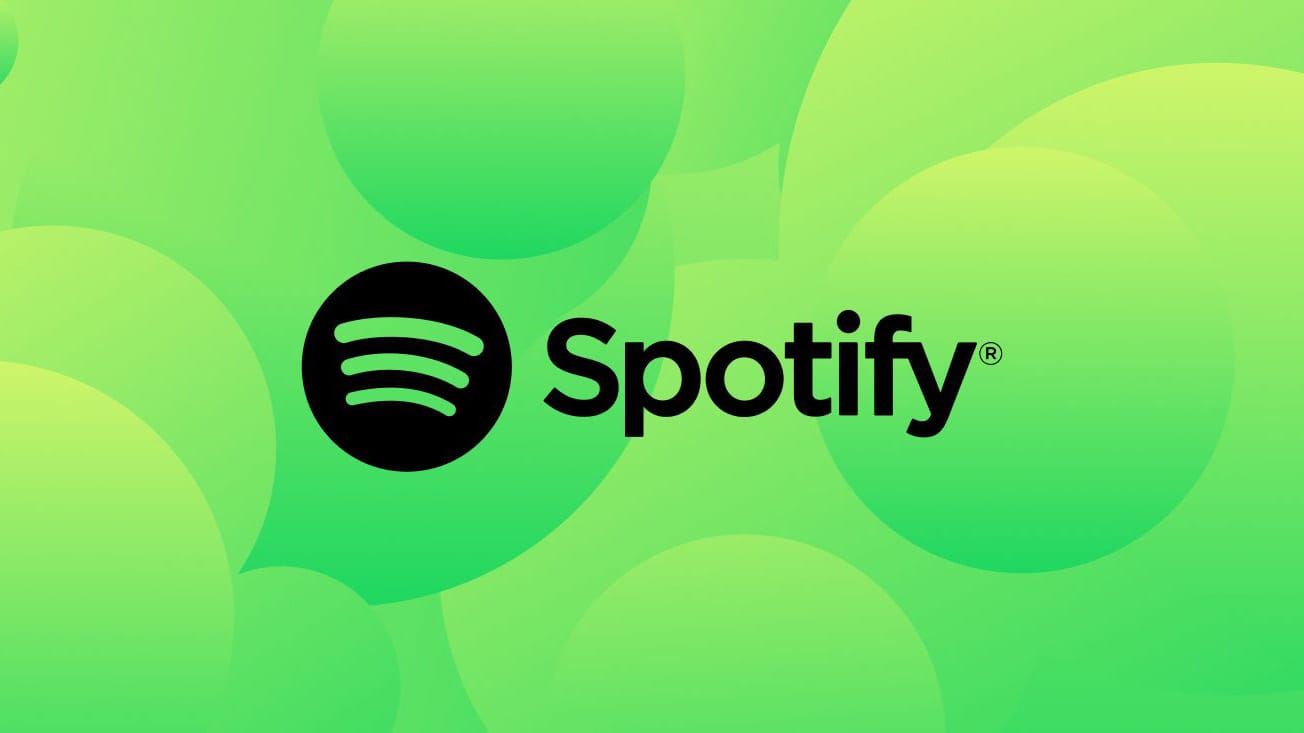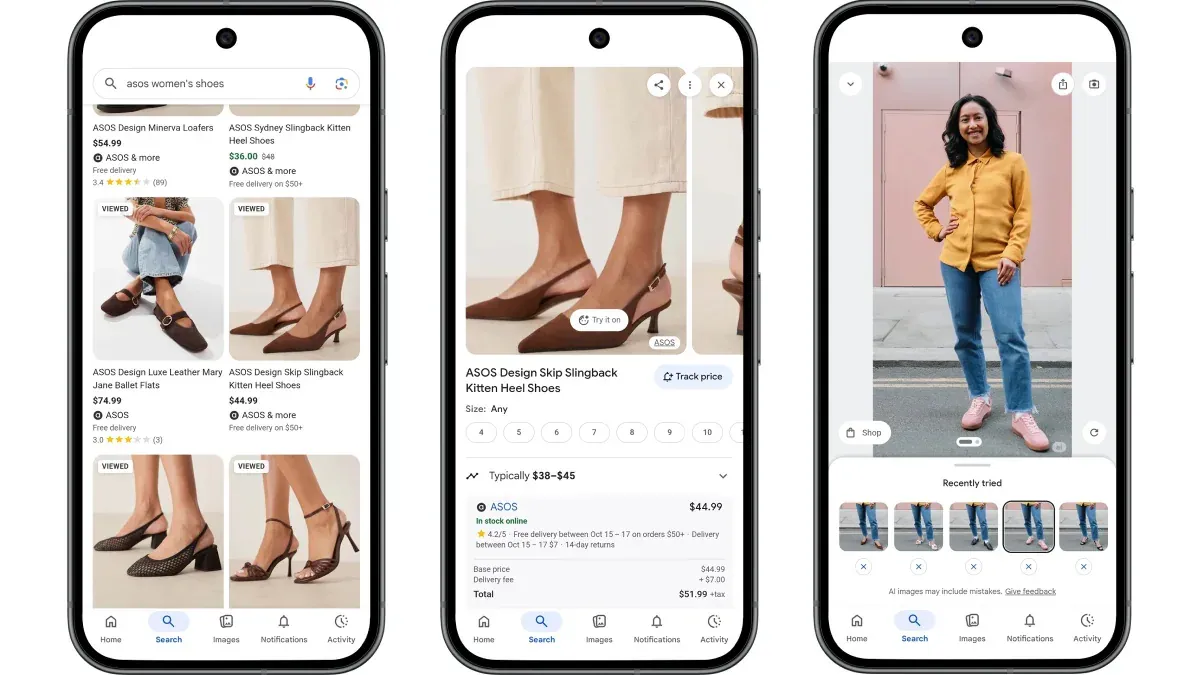How Stitch AI Reached 2.2M Visitors in Weeks
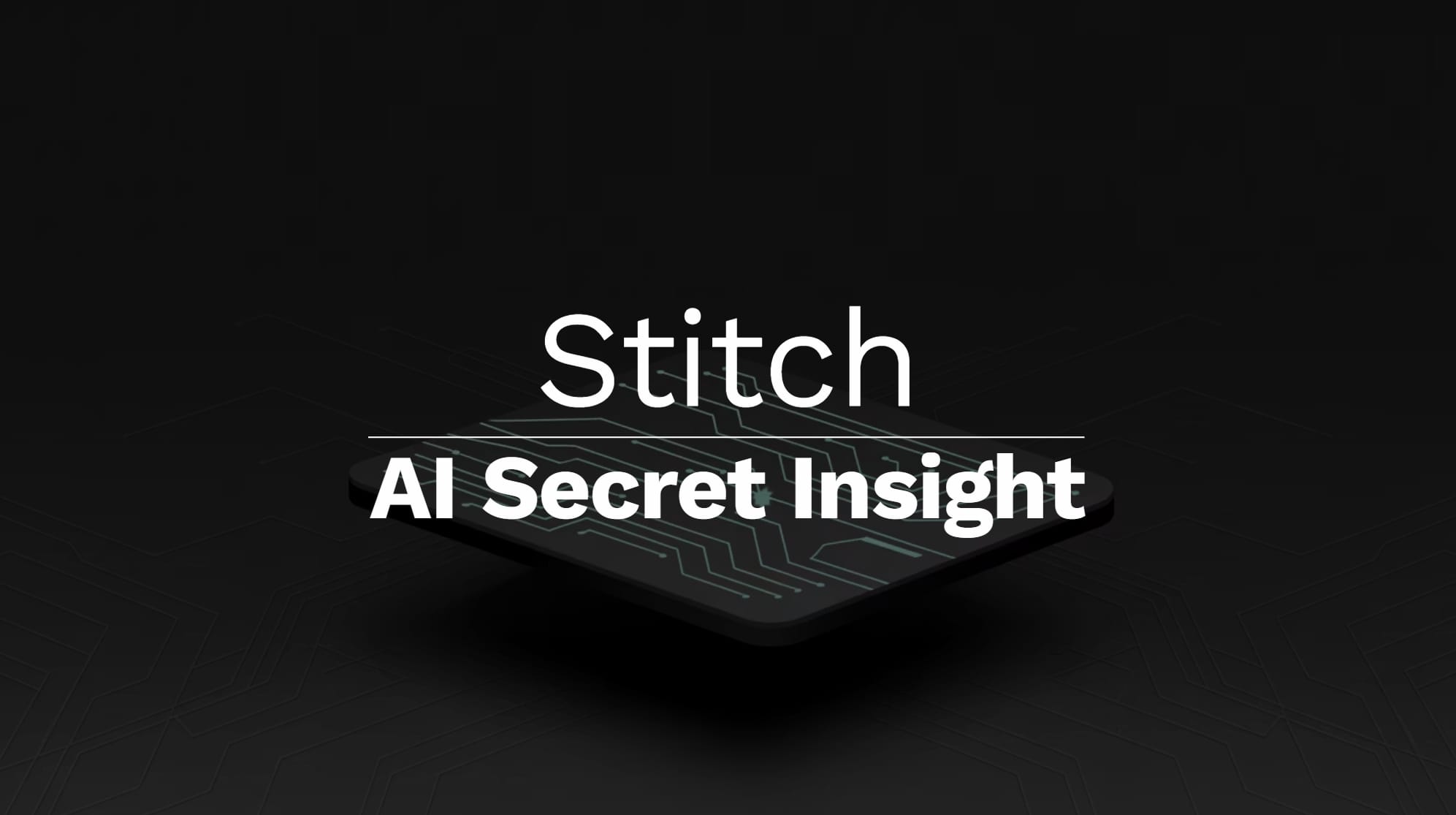
According to the insights outlined in the AI Secret Top Growth Ranking Report - May 2025, Stitch AI has achieved impressive growth. Stitch by Google, a generative AI-powered UI design tool, achieved remarkable growth shortly after its launch at Google I/O 2025. Within weeks, Stitch attracted 2.2 million new visitors in May 2025, solidifying its position as a disruptive innovation in the design and development space. Let's dissect the cold-start strategies, product strengths, growth channels, and retention mechanics that fueled Stitch’s rapid adoption.
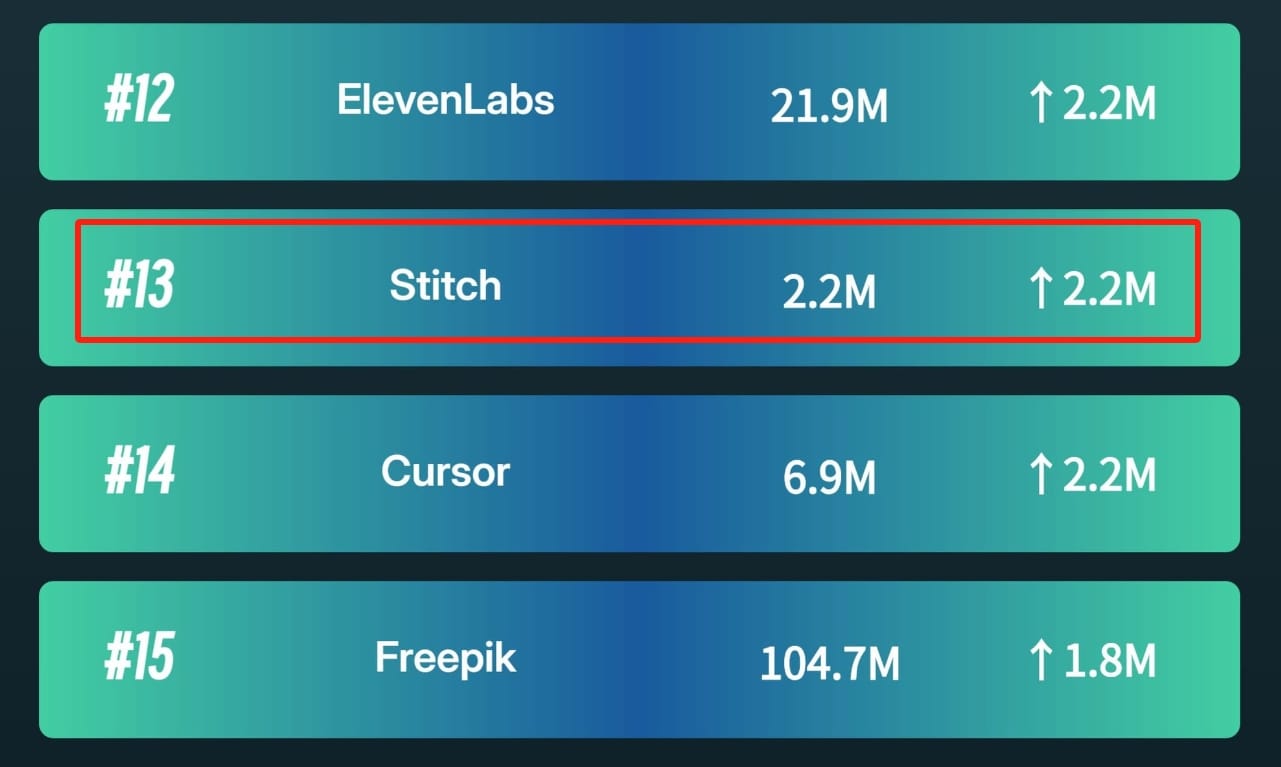
Cold-Start Tactics
Launching a new product, especially one as ambitious as Stitch, requires overcoming the "cold-start problem," where a lack of initial users can hinder growth. Stitch’s success stemmed from a combination of strategic positioning, product readiness, and leveraging Google’s ecosystem.
Stitch began as an experimental project under Google Labs, a platform known for fostering innovative tools. This positioning allowed Stitch to benefit from Google’s credibility while maintaining the agility of a startup-like team. The small founding team of designers and engineers ensured a focused approach to building a minimum viable product (MVP) that addressed specific pain points in UI/UX design.
To reduce barriers to entry, Stitch was made available for free during its early preview phase. This strategy encouraged adoption among UI/UX designers, developers, and solo founders who were curious about AI-powered design tools but hesitant to invest in unproven solutions. Free access also created a low-risk environment for users to experiment with the tool and provide valuable feedback.
Stitch leveraged Google’s Gemini 2.5 Pro, a multimodal AI model, to deliver advanced generative capabilities. This integration enabled Stitch to generate complete UI designs from text prompts, wireframes, or screenshots, offering instant value to users. The MVP focused on core features like natural language UI generation, live code export, and Figma integration, ensuring that the product was both functional and impactful from day one.
Product Strengths
Stitch’s rapid growth was underpinned by its ability to solve real problems for its target audience. Its product strengths not only differentiated it from competitors but also ensured that users experienced tangible benefits.
Stitch’s standout feature was its ability to generate complete UI designs from natural language prompts or visual inputs like screenshots and wireframes. For example, users could describe a design—such as “a dashboard for an education platform focused on AI and automation”—and Stitch would produce a responsive layout within seconds. This feature significantly reduced the time and effort required to create prototypes, making it a game-changer for designers and developers.
Stitch’s integration with popular design tools like Figma and its ability to export HTML/CSS code directly made it highly versatile. Users could refine their designs in Figma or use the exported code for development, bridging the gap between design and implementation. This interoperability ensured that Stitch fit seamlessly into existing workflows.
Stitch allowed users to customize their designs in real time through an interactive chat interface. Features like theme selection, color adjustments, and font modifications enabled users to tailor their designs to specific needs. This level of customization enhanced user satisfaction and reinforced Stitch’s value proposition.
Growth Channels
Stitch’s explosive growth was driven by strategic use of launch platforms, community engagement, and media coverage. These growth channels amplified its reach and credibility.
Google I/O 2025 served as the perfect platform to unveil Stitch. The event attracted a global audience of developers, designers, and tech enthusiasts, providing Stitch with unparalleled visibility. The announcement at Google I/O positioned Stitch as a cutting-edge tool backed by one of the world’s most trusted tech companies.
Stitch’s team and early adopters created tutorials and demos on platforms like YouTube, Twitter, and LinkedIn. These resources showcased Stitch’s capabilities and provided practical guidance, encouraging more users to try the tool. Community-driven content also fostered a sense of belonging among users, turning them into advocates for the product.
Stitch garnered extensive media coverage from outlets like TechCrunch, Medium, and design-focused blogs. Articles highlighted its innovative features and potential to disrupt the design industry, further boosting its credibility. This coverage not only attracted new users but also positioned Stitch as a thought leader in the AI and design space.
Conversion and Retention Mechanics
Stitch’s ability to convert users into loyal advocates was key to sustaining its growth. Its retention strategies focused on delivering value, fostering engagement, and iterating based on feedback.
By offering free access to a tool that generated real, usable designs, Stitch ensured that users experienced immediate value. This approach encouraged users to explore the tool further and share their experiences with others, creating a viral growth loop.
Stitch actively solicited feedback from its early users and incorporated their suggestions into rapid feature updates. This iterative approach not only improved the product but also demonstrated that Stitch valued its users’ input, fostering trust and loyalty.
Stitch’s integration with Figma and its ability to export designs in multiple formats made it easy for users to share their work with colleagues and clients. This shareability increased Stitch’s visibility and encouraged adoption within teams and organizations.
Key Takeaways
Stitch’s journey offers valuable lessons for teams of early-stage AI or SaaS products:
- Deliver Instant Value Through Output: Focus on creating tools that provide immediate, tangible benefits to users. Stitch’s ability to generate complete UI designs from prompts was a key driver of its adoption.
- Leverage Platform Credibility and Media Timing: Launching at Google I/O gave Stitch instant credibility and visibility. Founders should identify similar opportunities to showcase their products to the right audience.
- Design for Integration and Shareability: Stitch’s interoperability with tools like Figma and its export options made it easy for users to incorporate it into their workflows. Products that integrate seamlessly with existing tools are more likely to succeed.
- Engage Users Through Feedback and Iteration: Actively involve users in the product development process and iterate based on their feedback. This approach not only improves the product but also builds trust and loyalty.
Teams of early-stage AI or SaaS products can draw inspiration from Stitch’s success to achieve high-velocity adoption and long-term growth.

